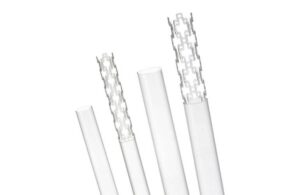
Orangeburg, South Carolina-based Zeus designed Absorv XSE as a highly customizable platform for design. Available in a variety of resins and expanded size ranges, it offers an alternative to metallic products permanently implanted.
“Our new Absorv XSE oriented tubing gives medical device manufacturers another tool in their design toolkit,” said Carl Liebert, director of product management at Zeus. “As our customers set out to develop next-generation devices, this latest Zeus tubing platform helps them expand the types of applications they address and produce better overall designs.”
According to the company, Absorv XSE’s versatility enables medical device manufacturers to explore bioresorbable vascular scaffold (BRS) applications beyond the treatment of coronary artery disease. The company also touts potential applications in cardiovascular, peripheral vascular, ear, nose and throat (ENT) and related fields.
The system leverages significant advancements in polymer processing, Zeus says. Through customization, device engineers can configure product properties to meet design requirements. These can relate to both mechanical properties and absorption profiles.
Test results for the tubing demonstrated longer lengths and improved wall thickness uniformity resulting in 25% more usable scaffolds after laser cutting compared to the previous generation of Absorv oriented tubing. This could translate to improved consistency, greater laser-cutting efficiency and more predictable outcomes.
“We developed Absorv XSE oriented tubing to address shortcomings with first-generation bioresorbable vascular scaffolds. This next evolution in bioresorbable device design gives device engineers more efficient and predictable options,” said Jason Fant, product manager at Zeus. “With a combination of unmatched sizing, uniform wall thickness, and tailored absorption profiles, Absorv XSE oriented tubing will allow designers to replace metallic stents in a wider variety of procedures.”

